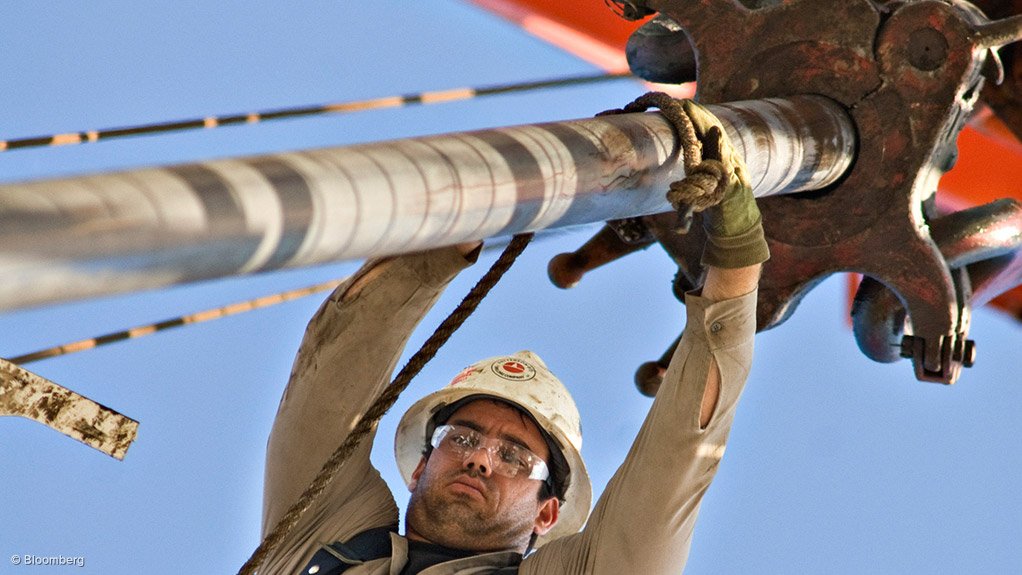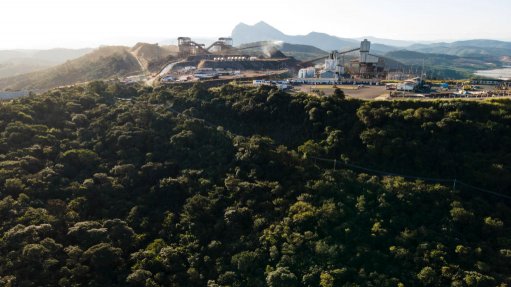Oil discoveries and new projects fall to historic low in 2016 – report
VANCOUVER (miningweekly.com) – New analysis by the International Energy Agency (IEA) has found that worldwide oil discoveries fell to a record low in 2016 as companies continued to cut spending and conventional oil projects sanctioned were at the lowest level in more than 70 years, trends that could continue this year.
The IEA, a Paris-based autonomous intergovernmental organisation established in the framework of the Organisation for Economic Cooperation and Development in 1974 in the wake of the 1973 oil crisis, said in a statement on Thursday that oil discoveries fell to 2.4-billion barrels in 2016, compared with an average of 9-billion barrels a year over the past 15 years.
Meanwhile, the volume of conventional resources sanctioned for development last year fell to 4.7-billion barrels, 30% lower than the previous year as the number of projects that received a final investment decision dropped to the lowest level since the 1940s.
According to the IEA, this sharp slowdown in activity in the conventional oil sector was the result of reduced investment spending driven by low oil prices. It brings an additional cause of concern for global energy security at a time of heightened geopolitical risks in some major producer countries, such as Venezuela.
The slump in the conventional oil sector contrasts with the resilience of the US shale industry. There, investment rebounded sharply and output rose, on the back of production costs cut in half since 2014. This growth in US shale output has become a fundamental factor in balancing low activity in the conventional oil industry, the IEA said.
IEA information points to conventional oil output of 69-million barrels a day representing by far the largest share of global oil production of 85-million barrels a day. Further, 6.5-million barrels a day come from liquids production from the US shale plays, and the rest is made up of other natural gas liquids and unconventional oil sources such as oil sands and heavy oil.
CAVEAT
With global demand expected to grow by 1.2-million barrels a day every year in the next five years, the IEA has repeatedly warned that an extended period of sharply lower oil investment could lead to a tightening in supplies.
Exploration spending is expected to fall again in 2017 for the third year in a row to less than half of 2014 levels, resulting in another year of low discoveries. The level of new sanctioned projects so far in 2017 remains depressed.
"Every new piece of evidence points to a two-speed oil market, with new activity at a historic low on the conventional side contrasted by remarkable growth in US shale production. The key question for the future of the oil market is for how long can a surge in US shale supplies make up for the slow pace of growth elsewhere in the oil sector,” IEA executive director Dr Fatih Birol stated.
The US shale industry has lowered its costs to such an extent that in many cases it is now more competitive than conventional projects. The average break-even price in the Permian basin, in Texas, for example, is now at $40/bl to $45/bl. Liquids production from US shale plays is expected to expand by 2.3-million barrels a day by 2022 at current prices, and expand even more if prices rise further, the IEA forecast.
The deepwater offshore sector, which accounts for almost a third of crude oil production and is a crucial component of future global supplies, has been particularly hard hit by the industry's slowdown. In 2016, only 13% of all conventional resources sanctioned were offshore, compared with more than 40% on average between 2000 and 2015.
In the North Sea, for instance, oil investments fell to less than $25-billion in 2016, about half the level of 2014. Coincidentally, this is now approaching the level of spending in offshore wind projects in the North Sea, which has doubled to about $20-billion in the same period.
Comments
Press Office
Announcements
What's On
Subscribe to improve your user experience...
Option 1 (equivalent of R125 a month):
Receive a weekly copy of Creamer Media's Engineering News & Mining Weekly magazine
(print copy for those in South Africa and e-magazine for those outside of South Africa)
Receive daily email newsletters
Access to full search results
Access archive of magazine back copies
Access to Projects in Progress
Access to ONE Research Report of your choice in PDF format
Option 2 (equivalent of R375 a month):
All benefits from Option 1
PLUS
Access to Creamer Media's Research Channel Africa for ALL Research Reports, in PDF format, on various industrial and mining sectors
including Electricity; Water; Energy Transition; Hydrogen; Roads, Rail and Ports; Coal; Gold; Platinum; Battery Metals; etc.
Already a subscriber?
Forgotten your password?
Receive weekly copy of Creamer Media's Engineering News & Mining Weekly magazine (print copy for those in South Africa and e-magazine for those outside of South Africa)
➕
Recieve daily email newsletters
➕
Access to full search results
➕
Access archive of magazine back copies
➕
Access to Projects in Progress
➕
Access to ONE Research Report of your choice in PDF format
RESEARCH CHANNEL AFRICA
R4500 (equivalent of R375 a month)
SUBSCRIBEAll benefits from Option 1
➕
Access to Creamer Media's Research Channel Africa for ALL Research Reports on various industrial and mining sectors, in PDF format, including on:
Electricity
➕
Water
➕
Energy Transition
➕
Hydrogen
➕
Roads, Rail and Ports
➕
Coal
➕
Gold
➕
Platinum
➕
Battery Metals
➕
etc.
Receive all benefits from Option 1 or Option 2 delivered to numerous people at your company
➕
Multiple User names and Passwords for simultaneous log-ins
➕
Intranet integration access to all in your organisation




















